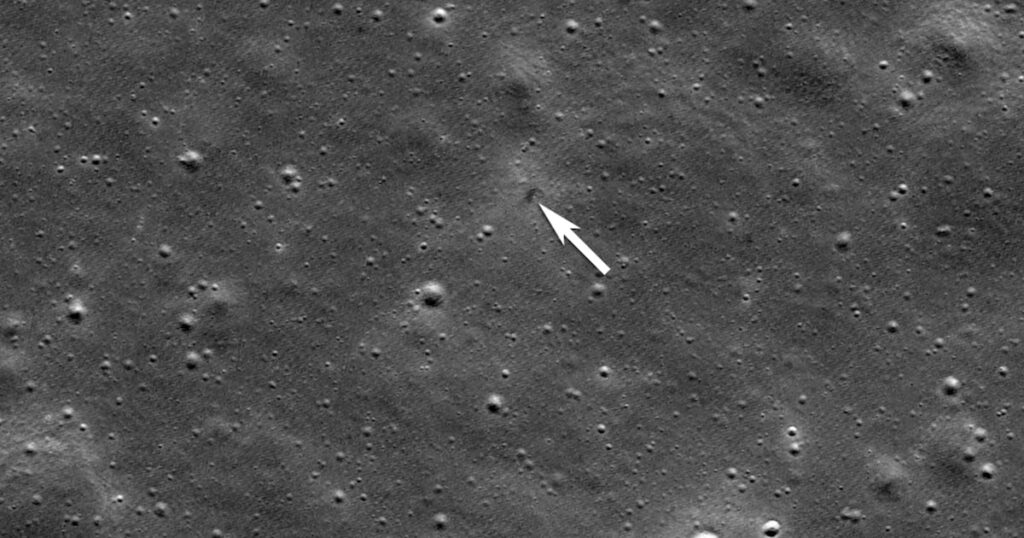
WASHINGTON, D.C. – NASA has released striking new images capturing the crash site of a Japanese lunar lander that impacted the moon earlier this month, marking a significant event in the ongoing exploration of space.
Breaking: Japanese Lander Crash Site Revealed
The images, taken by NASA’s Lunar Reconnaissance Orbiter, reveal a dark mark and a faint halo in the Mare Frigoris region—also known as the Sea of Cold—where ispace’s “Resilience” lander and its mini rover collided with the lunar surface.
The halo, according to NASA, appears to have been formed by lunar dust scattered from the crash, providing a stark visual of the incident.
Immediate Impact
The images were captured last week and made public Friday, approximately two weeks after the lander’s failed descent. This development highlights the challenges faced in achieving successful lunar landings, a goal pursued by several space agencies worldwide.
Key Details Emerge
Launched in January from Cape Canaveral, Florida, Resilience was part of ispace’s second attempt to achieve a lunar landing. Unfortunately, the Tokyo-based company also experienced a failure in its first mission last year.
The spacecraft was aiming to land in the moon’s far northern volcanic plains, but contact was lost just before touchdown. NASA’s orbiter later identified the impact site, providing crucial data for further analysis.
By the Numbers
- Launch Date: January 2025
- Impact Region: Mare Frigoris, Moon
- Previous Attempt: First mission failure in 2024
Industry Response
Ispace has not yet disclosed the specifics of what went wrong but plans to hold a news conference next week to share findings from its investigation. Despite the setback, ispace has stated it remains committed to future missions and improving its lander technology.
Expert Analysis
Space industry experts suggest that the failure underscores the complexities of lunar landings, which involve precise calculations and robust technology. The announcement comes as many private companies are racing to establish a presence on the moon, often in collaboration with national space agencies.
Background Context
This development builds on a history of ambitious lunar exploration efforts. The timing is particularly significant as global interest in lunar resources and potential colonization continues to grow. According to sources familiar with the industry, these missions are crucial for testing new technologies that may one day support human life on the moon.
What Comes Next
Looking forward, ispace is expected to refine its approach and technology based on the findings of its investigation. The move represents a significant shift from previous strategies, emphasizing resilience and adaptability in the face of setbacks.
Meanwhile, industry experts warn that while failures are part of the learning process, they also serve as reminders of the formidable challenges in space exploration. The path forward will likely involve enhanced international collaboration and innovation.
As ispace prepares to address the media next week, the space community will be watching closely for insights that could influence future lunar missions.






